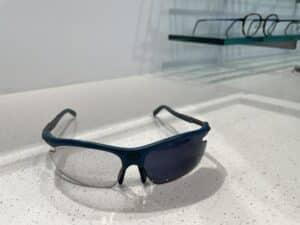 What are transition glasses lenses?
What are transition glasses lenses?
Transition glasses lenses are also called ‘Photochromics’, these lenses darken in bright conditions and lighten to a (typically) clear lens inside. This technology in theory allows you to wear one pair of glasses all day long, indoors or out, and stay comfortable. One of our opticians at the downtown Seattle Market Optical really likes transitions. Dorey said, “It’s really convenient because it’s One and Done!”
Many patients confuse the term “Transitions” with “Progressives”. Progressives have a progression of lens powers that makes them multi-focal lenses. This type of lens is typically used by patients over 40 to help them deal with the age related loss of near vision. This normal reduction in our ability to focus up close is known as presbyopia. Turns out that you can get Transition lenses with or without this type of multi-focal lens.
Should I get transitions in my next pair of glasses?
In optometry school, patients kept asking Dr. Mark Cannon if they should get transitions. Having never tried them, he opted to do some research by having a pair made for himself. They did indeed cut down the brightness in the outdoors pretty effectively – though they did not do this as well as dedicated sunglasses. The transition lens technology did allow for the simplicity of one pair of glasses all day. Yet it wasn’t perfect.
Here was the downside: If Dr. Mark stepped outside for a few moments during the day the lenses would darken. Then, upon re-entering the clinic ready to greet his next patient, the lenses would still be transitioning to their clear state. This in-between state of tint could be off-putting, especially for first impressions. In the end, the transitions did not get much use, as first impressions are quite important in health care. Clearly, the young eye doctor did not want to look shady or have odd-looking glasses on while meeting and greeting patients.
Another consideration is this. If you primarily want them for driving, transitions are not the best technology for you. The lenses only darken when absorbing UV light, and your car’s windows block UV light. So unless you intend to use them in a convertible (with the top down) you’d be better off with a dedicated pair of sunglasses with your Rx built in.
The image at the top of this post is Dr. Cannon’s only pair of transition glasses. Yes, one lens is dark in the image, and the other is not. This was done for the effect to show how much darkening is possible with transition lenses. These cycling glasses have become his go-to for biking and jogging. They are an indispensable part of this kit because they automatically adjust to changing conditions outdoors. It doesn’t matter if the sun just went down – the same pair of glasses works great. Likewise, if he’s trail running or mountain biking, the direct sun comes and goes with the tree cover, and these glasses are ready for anything.
Best Glasses Choices
They are Rudy Project Rydon frames, which retail for $270 at the time this blog is going to press. The stock lenses can have mild glasses Rx ground into them. Larger prescriptions can work too, with the addition of the Rydon Optical Docks, which are surprisingly inexpensive at $80. Then you’d have to pay for the ophthalmic lenses to go in the “Docks”, which would cost more than $80.
Do Transition Glasses actually block UV light?
Yes, they do block 100% of the sun’s eye-damaging energy (UV radiation). Theoretically, they will block as much Ultra-Violet (UV) light as a dedicated (constantly tinted) sunglasses Rx, yet there is another important factor to consider. Your regular glasses probably are not wraparounds that block all the light coming in from the sides (as shown in the images on this post). Light coming in from the side can make it feel like you don’t have sunglasses on at all.
This is important for more than just the comfort piece. UV light can actually cause damage to the structures in your eyes over time. In fact, it can damage the front, middle (the intra-ocular lens), and back of your eyes.
Transition lenses are really great for patients with high glasses Rx who need sunglasses. In order for patients with a 7-diopter glasses Rx (or higher than that) to see well without super thick lenses, opticians will set them up with “high index lenses”. This is basically a type of lens that bends the light faster so that the patient can avoid having so-called ‘Coke-Bottle Glasses’. Yet tinted lenses (for dedicated sunglasses) are not available in really high-index materials such as 1.74. Transitions are, so it can be a great way for people with a high Rx to wear sunglasses without needing to put on contact lenses first.
What’s the difference between Transitions/Photochromics and Progressives?
The transition lenses are sensitive to light and can change lenses from clear to tinted when they are exposed to UV light.
With progressive lenses, you will get multiple correction powers (for distance and closer things) within the same lens. It is an option to do a Progressive with Transition lenses.
Are transitions good for driving?
They don’t darken much in the car because your windows and moonroof block UV light. Most patients would prefer dedicated sunglasses (or a clip-ons) over photochromic lenses.
Would Transition Glasses work well for cycling and running?
The answer to this one is a resounding YES! It is quite possible that outdoor sports are the best possible application for photochromic lenses.
